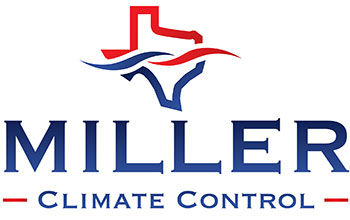We all like saving money on our monthly utility bills, but it just so happens there’s a way to do it when you aren’t even home.
It starts with your thermostat. By using automatic schedules, you can tailor the temperature to your needs. This means establishing various temperature settings for when you’re home, away or even when you’re sleeping.
With a few simple adjustments, you can enjoy comfy temperatures while also keeping more of your money. Here are some ways your thermostat can be a source of energy savings:
While at Home
When you’re home, you want a nice range of pleasant temperatures. That’s why it’s best to set your thermostat lower in the summer while you are in the house to appreciate the cool air.
But in terms of energy efficiency, the best range for when you’re in your home during the summer is usually between 78 and 80 degrees Fahrenheit. This way, you’ll avoid the worst of summer while still keeping your energy bills low.
While Gone
If you’re setting the temperature for when you are out of the house in summer, the majority of homeowners will set the thermostat higher for while they’re gone.
Depending on the local climate or your home’s location, you can set the thermostat to higher temperatures like 88 degrees while no one is home and then lower it back to the sweet spot of 78-80 degrees after you return. This way, your air conditioning system isn’t working around the clock to keep an empty house cool.
While Sleeping
When it comes to sleeping in the summer, you want your thermostat set at a comfortable temperature. You should try and keep things between 68-72 degrees Fahrenheit. There’s less risk of getting too hot or too cold at some point overnight.
Additional Ways to Reduce Energy Use:
- Put in a smart thermostat: Using a smart thermostat in the summer can lower energy costs since it can plan your temperature adjustments according to your lifestyle and home environment. It’ll take care of making changes while you are home or sleeping, while allowing it to warm up when the house is empty. With reliable brands like the Lennox iComfort, you have the ability to remotely access and change the temperature through your smartphone, tablet or laptop. Requesting smart thermostat installation in your Georgetown home is an effortless way to set the correct temperature even when you aren’t home.
- Replace current equipment with a newer HVAC system: A high-efficiency HVAC system is another great option for long-term energy savings. If a system boasts high energy efficiency, lower utility bills won’t be far behind since it requires less energy to achieve comfortable temperatures. Air conditioning installation in Georgetown is only a phone call away, so don’t hesitate to reach out to local pros like Miller Climate Control LLC who can set you up for success.
- Schedule annual AC maintenance: Hiring a skilled professional to perform regular air conditioning maintenance in Georgetown can have a serious effect on your total monthly energy use. With regular cleaning of the coils, checking for damage and clearing air vents of dust and debris, you may notice your HVAC system run more efficiently. More efficient operation reduces strain on the unit and lowers operational costs, lowering total energy use and eventually the total monthly bill.
- Clean or replace the air filter on a regular basis: A regular schedule for cleaning or replacing the HVAC system’s air filter saves money by keeping airflow as smooth and consistent as possible. When filters are clogged with dirt and debris, air conditioners have to work harder, and the strain can reduce the system’s life span and lead to breakdowns.
- Check your attic insulation: Insulation is a vital part of maintaining an energy-efficient home, keeping the hot air outside and the cool air inside through summer. The North American Insulation Manufacturers Association (NAIMA) suggests that homeowners living in southern climates should possess at least 13-14 inches of insulation, while colder climates do better with 16-18 inches.
- Inspect your ventilation: Damage to the ventilation is capable of increasing your energy bills much more than 20 percent, plus it can also lead to problems with your water heater, clothes dryer and other appliances throughout your home. Watching for signs of leaks and sealing them can address both concerns.
- Seal all other leaky spots in your home: Finding and sealing any remaining leaks in your home with caulk, foam sealant or weather-stripping can help keep it cooler on hot summer days. Don’t forget to check for any gaps around windows, doors and even outdoor fixtures. Devoting time and effort to sealing leaks now can help you save a lot in the long term.

